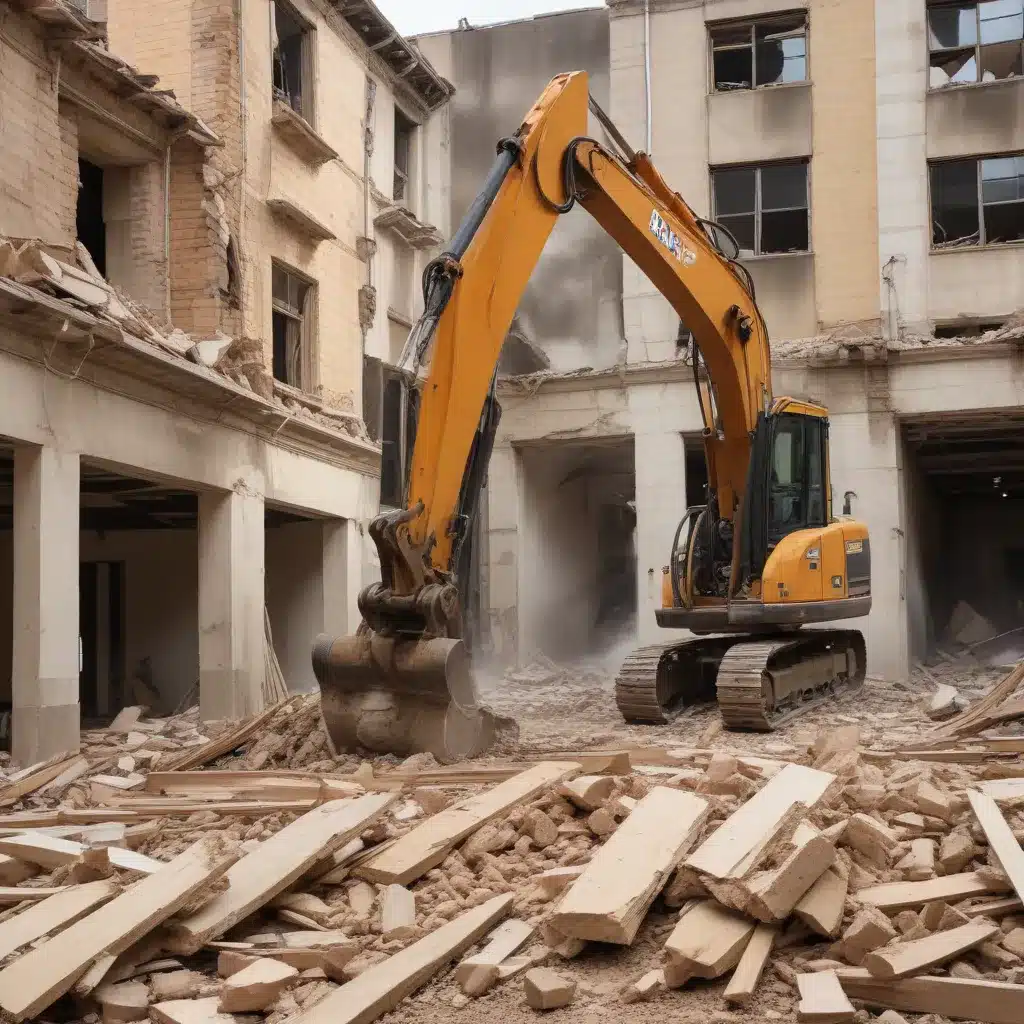
Embarking on a demolition project can be an exciting, if daunting, prospect for any homeowner or renovation enthusiast. Whether you’re tearing down walls to open up your home’s layout or dismantling an entire structure, the demolition phase sets the stage for transformative change. However, with careful planning and the right techniques, you can streamline the demolition process to save precious time and resources.
Demolition Process Overview
Demolition is often the first step in a major renovation, and understanding the various methods and considerations is key to a successful project. Conventional demolition techniques, such as using a wrecking ball or hydraulic excavator, are commonly employed for large-scale jobs. For more precise or selective demolition, manual methods like jackhammers, reciprocating saws, and sledgehammers may be utilized.
When it comes to structural considerations, it’s essential to carefully evaluate the building’s integrity before beginning any demolition work. Load-bearing walls, support beams, and other critical structural elements must be identified and treated with caution to prevent unexpected collapses or damage. Proper site preparation, including the removal of hazardous materials, clearing the area, and establishing safe access routes, is also crucial for a streamlined demolition process.
Efficiency in Demolition
One of the key aspects of streamlining demolition is maximizing efficiency throughout the project. By employing time-saving strategies, optimizing equipment usage, and implementing effective waste management practices, you can significantly improve the overall productivity and cost-effectiveness of your demolition endeavor.
Time-Saving Strategies
Careful planning and coordination can make a significant difference in the speed and efficiency of your demolition project. Start by creating a detailed timeline and sequence of tasks, ensuring that each step is executed seamlessly. Organize your tools and equipment to minimize downtime spent searching for the right tool, and consider renting specialized equipment, such as excavators or jackhammers, to expedite the physical demolition work.
Approach the demolition in manageable stages rather than tackling the entire structure at once. This will allow you to focus on one area at a time, maximizing productivity and reducing downtime. Additionally, effective delegation and communication with your team can streamline the workflow and ensure everyone is working towards the same goal.
Equipment Optimization
The selection and use of the right equipment can have a substantial impact on the efficiency of your demolition project. Carefully assess the size and scope of your project to choose the appropriate dumpster rental size, ensuring that you have enough capacity to handle the anticipated waste while avoiding unnecessary costs.
When loading the dumpster, adopt efficient techniques such as sorting and separating materials, breaking down large items, and compacting debris to maximize the available space. This will help you minimize the number of dumpster rentals required, further streamlining the demolition process.
Waste Management
Effective waste management is a crucial component of a streamlined demolition project. A centralized dumpster rental not only provides a convenient disposal solution but also promotes responsible waste management practices. By separating recyclable materials and properly disposing of hazardous items, you can minimize the environmental impact of your demolition and potentially even recoup some cost through recycling rebates.
Safety Protocols
Maintaining a safe work environment is paramount during any demolition project. Proper training for your team, hazard identification, and adherence to compliance regulations are essential for ensuring the well-being of everyone involved.
Worker Training
Equip your team with the necessary personal protective equipment (PPE), such as hard hats, gloves, safety goggles, and steel-toed boots. Provide comprehensive training on the proper use of demolition tools and equipment, as well as the implementation of safety protocols, to minimize the risk of accidents and injuries.
Hazard Identification
Carefully inspect the site for potential hazards, including asbestos, lead-based paint, and electrical lines, and develop a plan to address these risks safely. Establish clear pathways, secure the dumpster, and exercise caution when handling heavy items to maintain a safe and organized worksite.
Compliance Regulations
Familiarize yourself with the local regulations and guidelines regarding the disposal of demolition waste, particularly hazardous materials. Ensure that you are adhering to all applicable laws and that your waste management practices are in compliance with environmental and safety standards.
Innovative Techniques
As the demolition industry continues to evolve, innovative techniques are emerging that can further streamline the process and enhance the overall sustainability of your project.
Robotic Demolition
Advancements in robotics have introduced remote-controlled demolition equipment that can access tight spaces, operate in hazardous environments, and perform precise demolition work with increased efficiency and reduced safety risks.
Selective Dismantling
Instead of a complete demolition, the selective dismantling approach focuses on the careful disassembly and reuse of building materials, reducing waste and promoting a more sustainable approach to renovation.
Environmentally-Friendly Approaches
Look for eco-friendly demolition techniques, such as the use of water-powered tools that minimize dust and noise pollution, or deconstruction methods that prioritize the salvage and repurposing of building materials.
By staying informed about the latest innovations in demolition, you can ensure that your project not only runs smoothly but also aligns with your sustainability goals.
Whether you’re embarking on a small-scale renovation or a large-scale demolition project, implementing these time-saving techniques can make a significant difference in the overall efficiency and success of your endeavor. By embracing a strategic, safety-conscious, and environmentally-conscious approach to demolition, you can streamline the process, reduce costs, and pave the way for a seamless and transformative renovation journey.
For more renovation inspiration and practical tips, be sure to visit Reluctant Renovator, where experienced home improvement consultants share their insights on diverse renovation themes, from budget-friendly projects to family-friendly designs.



